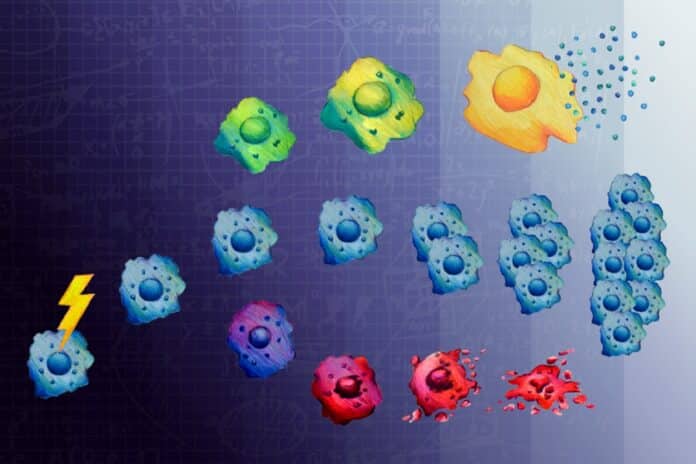“Making Sense of cell fate” is a fascinating exploration into the intricate mechanisms that govern how cells develop and differentiate, ultimately determining their specific functions and roles within the organism. This captivating study delves into the molecular pathways, genetic regulations, and environmental cues that shape cellular destinies.
By unraveling these complex processes, researchers aim to unlock valuable insights into tissue development, disease progression, and potential therapeutic interventions. Join us on this illuminating journey as we delve into the enigmatic world of cell fate and its profound implications for biological understanding and medical advancements.
Despite the availability of advanced therapies like immunotherapy and targeted treatments, radiation and chemotherapy remain the primary treatments for cancer patients, with around half of the patients undergoing radiation and 60-80 percent receiving chemotherapy. Both radiation and chemotherapy damage cancer cell DNA, taking advantage of their vulnerability, while healthy cells’ repair mechanisms allow them to survive.
Cancer cells with compromised repair systems due to mutations ideally undergo apoptosis or die. However, another possible outcome is senescence, where cells survive but stop dividing, playing a harmful role by enabling other cancer cells to become more aggressive. The decision for a cancer cell to stay, die, or enter senescence occurs shortly after treatment. However, the exact timing and mechanisms behind this decision still need to be determined.
In a recent open-access study published in Cell Systems on July 19, researchers from MIT have discovered that certain types of chemotherapy can trigger cancer cells to enter senescence. In this state, they survive but cease dividing within 12 hours of treatment.
The study challenges the conventional understanding of cell signaling proteins’ roles in cancer treatment, as proteins known for promoting cell proliferation and apoptosis were found to induce senescence after exposure to low doses of the chemotherapy drug doxorubicin.
By investigating cell signaling mechanisms through experiments and computational modeling, the researchers identified specific protein kinases and components of the AP-1 transcription factor complex linked to this senescence induction. These findings emphasize the importance of considering complex signaling interactions when designing effective cancer treatments and highlight the need for tailored drug combinations.
In this study, the researchers utilized two datasets to create a computational model that uncovers correlations between time, dosage, cell signaling, and cell fate. They identified specific proteins, MAP kinases Erk and JNK, and the transcription factor c-Jun, as key components of the AP-1 protein complex, known to be involved in triggering senescence.
The researchers validated these findings by inhibiting JNK and Erk after DNA damage, preventing cells from entering senescence. Surprisingly, the decision for cells to enter senescence was made within 12 hours of DNA damage, even though the observable accumulation of senescent cells took days. Additionally, with time, these MAP kinases shifted their role to promote the secretion of pro-inflammatory proteins that stimulate other cancer cells to proliferate and become resistant to chemotherapy.
Tatiana Netterfield, a graduate student in the Yaffe lab and the study’s lead author, says, “Proteins like cytokines encourage ‘bad behavior’ in neighboring tumor cells that lead to more aggressive cancer progression. Because of this, it is thought that senescent cells that stay near the tumor for long periods are detrimental to treating cancer.”
The study’s findings highlight the importance of understanding the molecular characteristics of cancer cells and contextual factors, such as time and dosing, in determining cell fate during cancer treatment. It specifically applies to cancer cells treated with a common type of chemotherapy that stalls DNA replication after repair.
The research warns against administering MEK inhibitors, a class of Erk inhibitors used in the clinic to curb cancer growth, together with chemotherapies, as this combination may unintentionally promote cell proliferation instead of senescence. Future studies will focus on understanding the factors influencing individual cells to proliferate or enter senescence, and next-generation sequencing will be employed to reveal the genes regulated by c-Jun to promote senescence.
Journal Reference:
- Tatiana S. Netterfield, Michael B. Yaffe1 et al., Biphasic JNK-Erk signaling separates the induction and maintenance of cell senescence after DNA damage induced by topoisomerase II inhibition. Cell Systems.DOI:10.1016/j.cels.2023.06.005.
